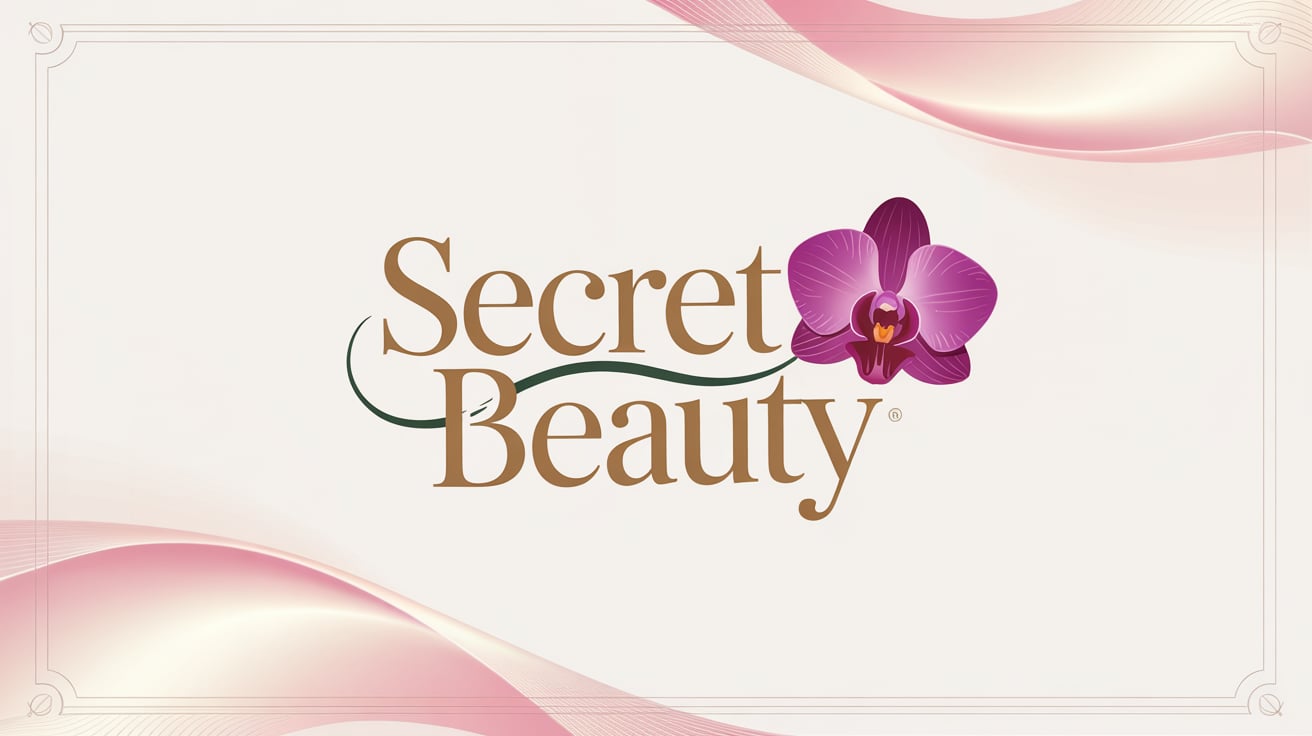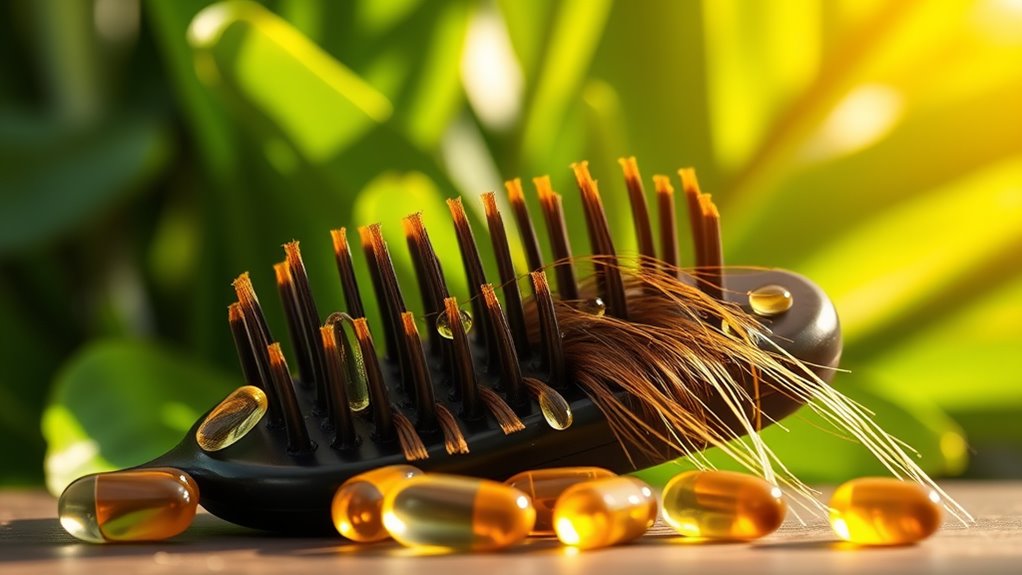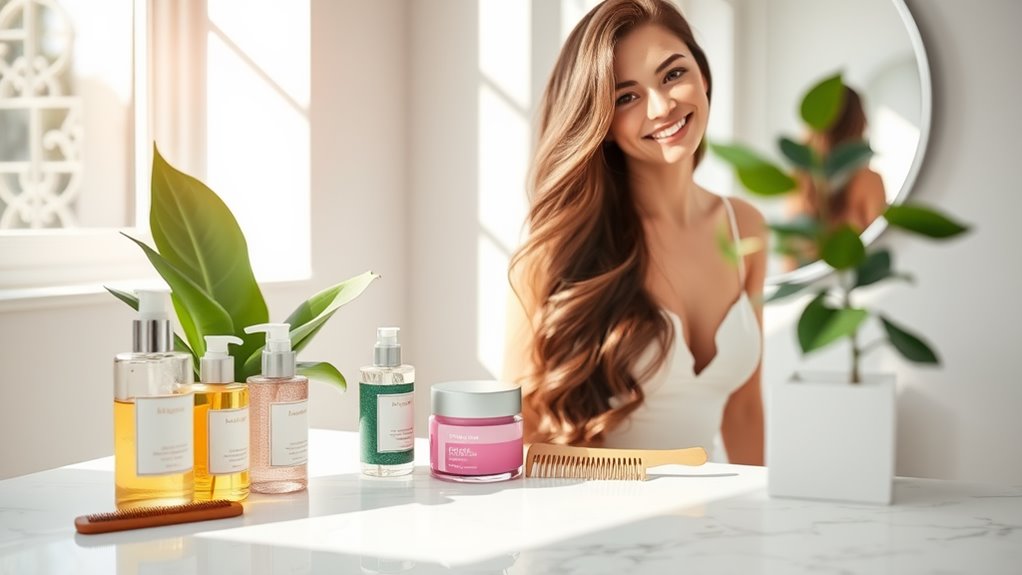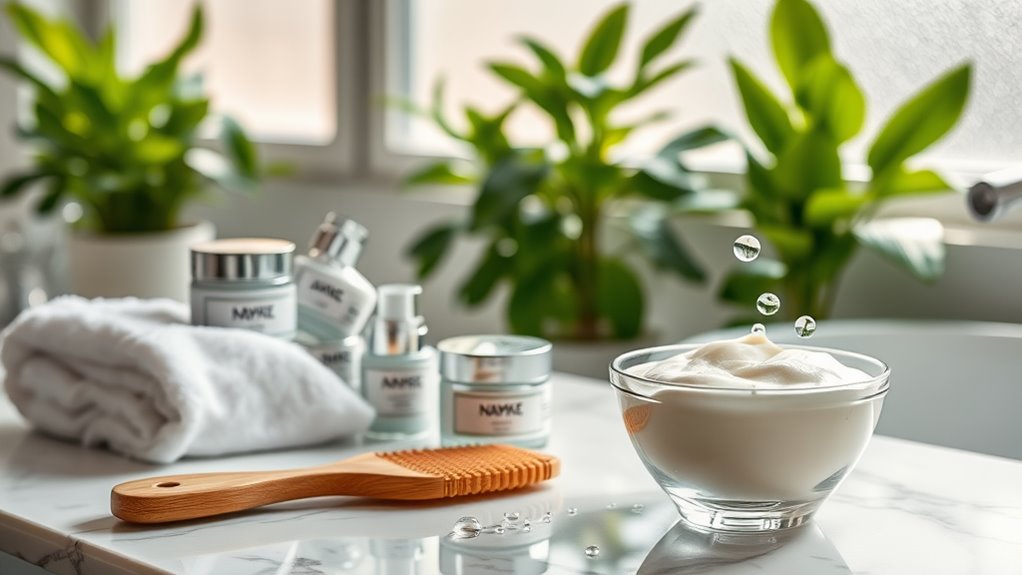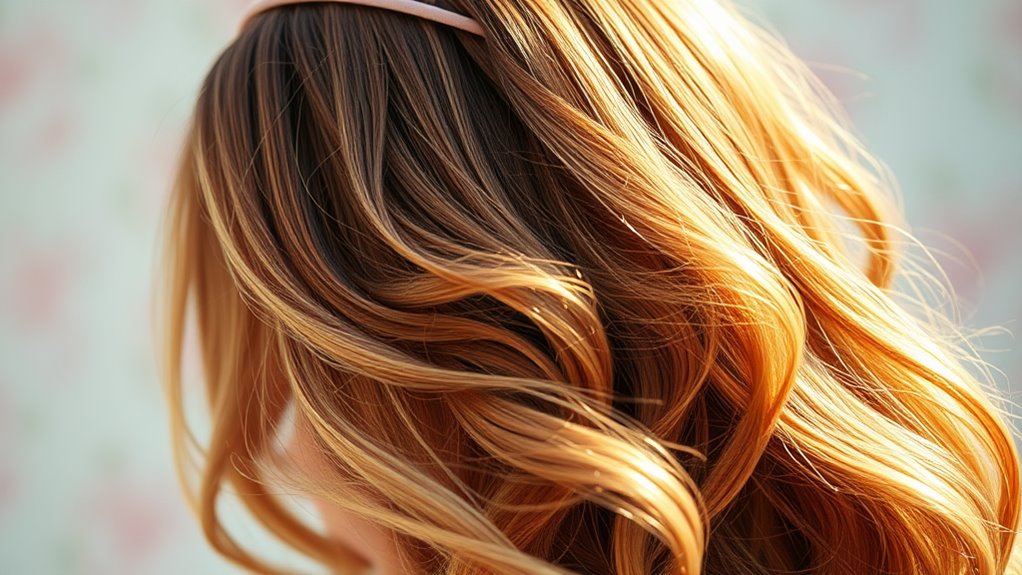Stop Hair Fall With This Natural DIY Blend
To stop hair fall, try a natural DIY blend of essential oils and carrier oils. Mix three drops of rosemary or lavender oil with one tablespoon of lighter carrier oil, like jojoba or coconut. Apply this blend directly to your scalp and hair, massaging it in for better absorption. Leave it on for at least 30 minutes, then wash it out. Use this treatment two to three times a week for best results, and you’ll discover additional tips for vibrant hair.
Key Takeaways
- Combine essential oils like rosemary and lavender with carrier oils such as coconut or jojoba to create a nourishing hair blend.
- Use a ratio of three drops of essential oil to one tablespoon of carrier oil for optimal effectiveness.
- Apply the blend directly to the scalp, massaging in circular motions to promote absorption and stimulate circulation.
- Leave the mixture on for at least 30 minutes before washing out to allow the nutrients to penetrate the hair follicles.
- Repeat the application two to three times a week for best results in reducing hair fall and promoting growth.
Understanding Hair Fall: Causes and Solutions
When you notice more hair on your brush than usual, it’s natural to feel concerned about hair fall. Understanding the underlying causes is essential for addressing this issue effectively.
Factors like stress, hormonal imbalances, and nutritional deficiencies can all contribute to hair loss. You might also be using products with harsh chemicals, which can weaken your strands.
To tackle this, consider a DIY hair fall fix that incorporates natural ingredients known for their restorative properties. For instance, a blend of coconut oil, castor oil, and essential oils can nourish your scalp and promote healthier hair growth. Additionally, incorporating proper hair care habits into your routine can significantly enhance your hair’s resilience and growth.
The Importance of Natural Remedies
When it comes to hair care, natural remedies offer a safe and effective alternative to harsh chemicals. You’ll find that natural ingredients not only nourish your hair but also promote overall scalp health. Embracing these remedies can lead to healthier, stronger hair without the side effects of synthetic products. Additionally, incorporating proven herbal solutions into your routine can significantly enhance hair growth and vitality.
Benefits of Natural Ingredients
Natural ingredients offer a powerful solution for addressing hair fall, as they harness the healing properties found in nature without harsh chemicals.
By incorporating these elements into your hair care routine, you can stimulate growth and strengthen your strands. Ingredients like aloe vera, coconut oil, and essential oils are rich in vitamins and minerals that nourish your scalp and promote healthy follicles.
They’re also known for their anti-inflammatory and antibacterial properties, which can help maintain a balanced scalp environment.
Using natural remedies not only enhances your hair’s health but also aligns with a holistic approach to wellness.
Embracing these ingredients empowers you to take control of your hair health and achieve lasting results without compromising your body’s integrity.
Avoiding Harsh Chemicals
While many commercial hair products promise quick fixes, they often contain harsh chemicals that can damage your hair and scalp over time.
These ingredients, like sulfates and parabens, strip your hair of its natural oils, leading to dryness and breakage. By choosing natural remedies, you empower yourself to nurture your hair without the risks associated with synthetic ingredients.
Embracing a DIY blend allows you to control what you apply, ensuring only nourishing components reach your locks. Ingredients like coconut oil, aloe vera, and essential oils can strengthen and rejuvenate your hair naturally.
With each application, you’re not just treating hair fall; you’re cultivating a healthier scalp and more resilient hair. Ultimately, your hair will reflect the care you invest in it.
Essential Oils for Hair Growth
When it comes to promoting hair growth, essential oils can be your best allies. You’ll want to explore which oils work best, learn effective application techniques, and keep safety precautions in mind. Additionally, natural ingredients have been shown to stimulate follicle health and promote faster hair growth. Let’s get started on how to incorporate these powerful oils into your routine for healthier hair.
Best Essential Oils
A variety of essential oils can greatly boost hair growth and reduce hair fall. You’ll find rosemary oil particularly effective; it stimulates blood circulation in the scalp, promoting follicle health.
Lavender oil not only enhances growth but also reduces stress, a common hair fall trigger. Peppermint oil invigorates the scalp, encouraging hair thickness and volume.
Tea tree oil fights dandruff and unclogs hair follicles, making it essential for a healthy scalp environment. Finally, cedarwood oil balances oil production and supports hair growth.
Application Techniques
To effectively harness the benefits of essential oils for hair growth, you need to know the right application techniques.
Start by mixing your chosen oils—like rosemary or lavender—with a carrier oil, such as jojoba or coconut oil. Once blended, section your hair and apply the mixture directly to your scalp using your fingertips. This guarantees even distribution and promotes better absorption.
Gently massage the scalp for 5-10 minutes to stimulate circulation and enhance effectiveness. For maximum benefits, let the oils sit for at least 30 minutes before rinsing. You can also consider applying the blend overnight for deeper nourishment.
Incorporate this routine 2-3 times a week, and you’ll be on your way to healthier, stronger hair.
Safety Precautions
While applying your blend for hair growth, it’s important to keep safety in mind. Always perform a patch test before full application to avoid allergic reactions. Dilute essential oils properly—never apply them directly to your scalp. If you’re pregnant or nursing, consult a healthcare professional before using any essential oils.
| Essential Oil | Safety Tip |
|---|---|
| Lavender | Generally safe; patch test first |
| Peppermint | Use in moderation; can be strong |
| Rosemary | Avoid if you have epilepsy |
Choosing the Right Carrier Oils
Selecting the right carrier oils is essential for creating an effective DIY blend to combat hair fall. Carrier oils serve as the foundation for your blend, delivering nutrients directly to your scalp and hair follicles.
Look for oils rich in fatty acids and vitamins, like jojoba, which mimics your scalp’s natural sebum, or argan oil, known for its moisturizing properties. Coconut oil is another excellent choice, penetrating the hair shaft to reduce protein loss.
Consider olive oil for its antioxidant benefits and castor oil to promote hair growth. Always choose cold-pressed, organic options to maximize potency. Incorporating nutrient-packed foods into your diet can further enhance the effectiveness of your hair care routine.
Beneficial Herbs for Scalp Health
When it comes to promoting scalp health, certain herbs can work wonders.
You’ll find that nourishing herbs support hair growth, while others offer antimicrobial benefits to keep your scalp clean.
Plus, some herbs provide soothing treatments that can alleviate irritation and promote overall wellness. Additionally, incorporating essential techniques into your routine can further enhance the benefits of these herbs for optimal scalp health.
Nourishing Herbs for Growth
To promote healthy hair growth, incorporating nourishing herbs into your routine can make all the difference.
Consider using aloe vera, known for its soothing properties, which hydrates the scalp and stimulates hair follicles. You might also want to try rosemary, as it’s famed for improving circulation to the scalp and encouraging new growth.
Another excellent choice is nettle, rich in vitamins A, C, and K, which strengthens hair and promotes thickness. Don’t overlook hibiscus; its amino acids and vitamins can prevent hair loss while enhancing shine.
Finally, fenugreek seeds are packed with protein and nicotinic acid, both essential for hair health. Regularly applying these herbs in your DIY blends will help you achieve vibrant, luscious locks.
Antimicrobial Properties of Herbs
While many people focus on hair growth, maintaining a healthy scalp is equally important, and certain herbs offer powerful antimicrobial properties that can promote scalp health.
Using herbs like rosemary, neem, and tea tree can help combat fungal and bacterial infections that may hinder hair growth. Rosemary not only stimulates circulation but also prevents dandruff, while neem’s potent antibacterial qualities can soothe irritation.
Tea tree oil is renowned for its ability to eliminate pathogens, promoting a cleaner scalp environment. Incorporating these herbs into your hair care routine can greatly reduce scalp issues, allowing your hair to thrive.
Soothing Scalp Treatments
Harnessing the power of herbs not only protects your scalp from infections but also offers soothing treatments that can alleviate irritation and discomfort.
By integrating these beneficial herbs into your routine, you’re investing in your scalp’s health. Consider these options:
-
Aloe Vera: Its cooling properties provide instant relief for itchy scalp.
-
Chamomile: Known for its anti-inflammatory effects, it calms irritation and promotes relaxation.
-
Lavender: This herb not only soothes but also helps in reducing stress, which can contribute to hair fall.
-
Peppermint: Its invigorating scent stimulates circulation while providing a revitalizing sensation.
Incorporating these herbs into your DIY blends will enhance your scalp health, ensuring a nourished environment for hair growth.
Creating Your DIY Hair Blend
Creating your own DIY hair blend can be a rewarding experience, especially when you seek natural solutions for hair fall. Start by selecting essential oils known for their hair-strengthening properties, like rosemary, lavender, or cedarwood.
Combine these with carrier oils such as coconut, jojoba, or olive oil to nourish your scalp and hair. Aim for a balanced ratio—typically, three drops of essential oil to one tablespoon of carrier oil works well.
Don’t forget to take into account your hair type; fine hair may benefit from lighter oils, while thicker hair can handle heavier ones.
Once you’ve blended your ingredients, store it in a dark glass bottle to preserve potency. This simple yet effective concoction can elevate your hair care routine appreciably.
How to Apply the Blend Effectively
To get the most out of your DIY hair blend, apply it directly to your scalp and hair in sections. This method guarantees that every strand receives the nourishment it needs. Here’s how to do it effectively:
-
Section your hair: Divide your hair into manageable parts for even application.
-
Use your fingertips: Gently massage the blend into your scalp using circular motions to stimulate blood flow.
-
Focus on the roots: Concentrate on the areas most prone to hair fall, guaranteeing deep penetration of the blend.
-
Leave it on: Allow the blend to sit for at least 30 minutes to maximize its benefits before washing it out.
Frequency of Application: Best Practices
While it’s essential to apply your DIY hair blend correctly, knowing how often to use it can make a significant difference in its effectiveness. Aim to apply the blend two to three times a week for best results.
This frequency allows your scalp to absorb the nutrients without overwhelming it, giving your hair the chance to rejuvenate. After each application, let the blend sit for at least 30 minutes before rinsing; this maximizes its benefits.
Pay attention to your hair’s response—if you notice improved strength and reduced fall, you might even reduce applications to once a week. Consistency is key, so establish a routine that fits into your schedule while ensuring your hair receives the care it deserves.
Additional Tips for Healthy Hair
Maintaining healthy hair goes beyond just applying your DIY blend regularly.
To truly elevate your hair care routine, consider these essential tips:
-
Hydrate: Drink plenty of water to keep your hair and scalp nourished from within.
-
Eat a Balanced Diet****: Incorporate foods rich in vitamins, minerals, and proteins, such as eggs, nuts, and leafy greens.
-
Limit Heat Styling: Reduce the use of heat tools, as excessive heat can weaken hair and lead to breakage.
-
Trim Regularly: Schedule trims every six to eight weeks to remove split ends and promote healthy growth.
Monitoring Progress and Results
As you start your DIY blend for hair fall, monitoring progress and results is essential to understanding its effectiveness. Track your hair health regularly and note any changes, whether positive or negative.
| Week | Observations |
|---|---|
| 1 | Initial application; some dryness noted. |
| 2 | Slight reduction in hair fall; scalp feels healthier. |
| 3 | Noticeable shine; new hair growth begins to appear. |
| 4 | Reduced hair fall; overall hair volume improves. |
Frequently Asked Questions
Can This Blend Be Used on All Hair Types?
Yes, this blend can be used on all hair types. It nourishes and strengthens your hair, regardless of texture or condition. You’ll likely notice improvements in health and energy, making it versatile and effective for everyone.
Are There Any Side Effects to Using Essential Oils?
Yes, essential oils can cause side effects like irritation or allergic reactions, especially if used improperly. It’s vital to do a patch test first and dilute oils to minimize risks for your specific hair type.
How Long Until I See Results From the Blend?
You’ll likely notice improvements in your hair within four to six weeks of consistent use. However, everyone’s hair responds differently, so keep monitoring your progress and adjust your routine as needed for ideal results.
Can I Store the DIY Blend for Later Use?
You can store the DIY blend in a cool, dark place for up to two weeks. Just make sure to use an airtight container to maintain its potency and effectiveness for your hair care routine.
Is This Blend Safe for Pregnant or Breastfeeding Women?
When considering safety for pregnant or breastfeeding women, it’s essential to consult a healthcare professional. They’ll help you determine if the ingredients in your blend pose any risks during this important time. Always prioritize health.
